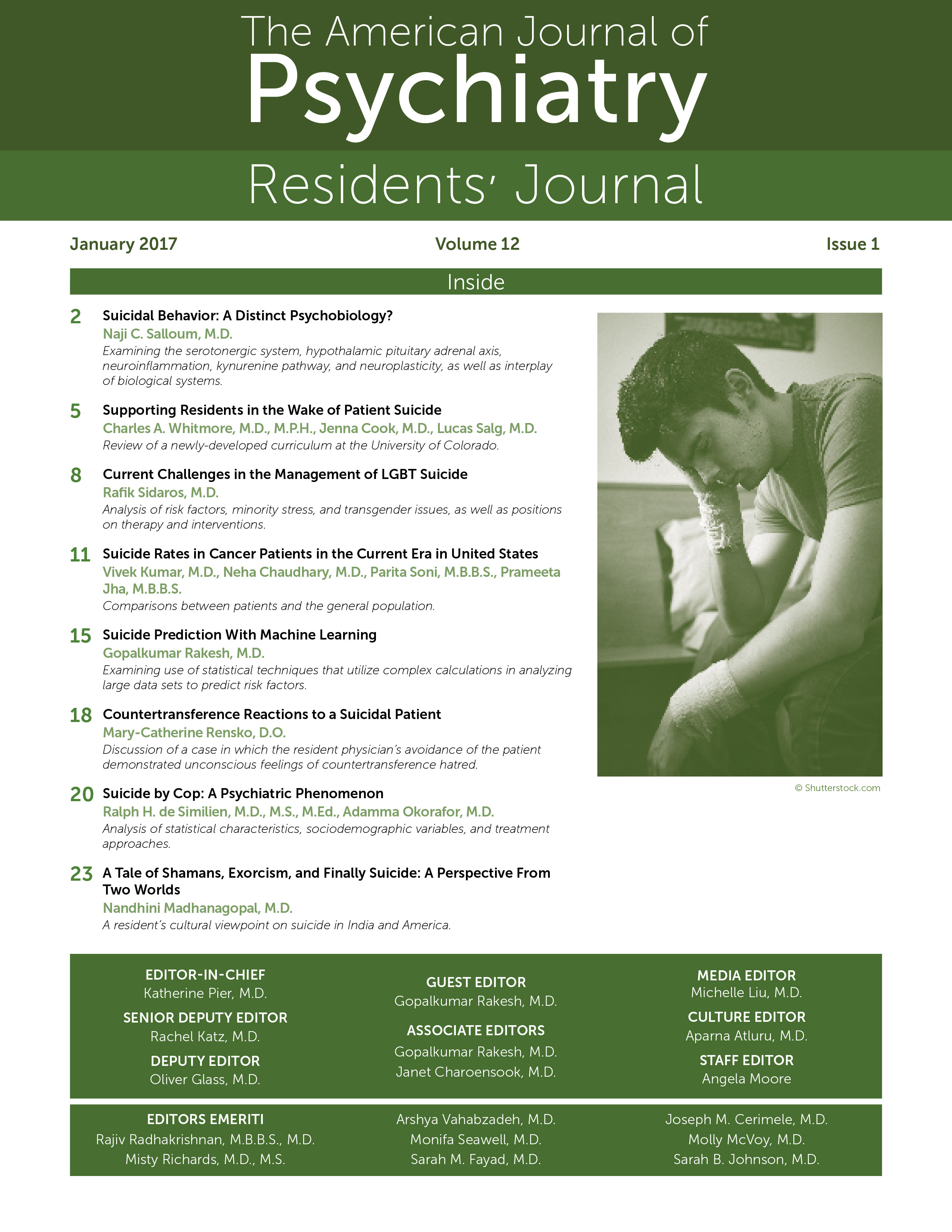A Tale of Shamans, Exorcism, and Finally Suicide: A Perspective From Two Worlds
It was my first week on night float in the emergency room. I signed onto the pager and waited for my first ER consult. A page at 8:00 PM read, “23-year-old male with a suicide attempt and urine drug screen positive for cocaine. Needs psychiatric evaluation.” I trudged along to meet him.
During that walk, my mind drifted back to where I was 2 years prior. I was in another emergency room halfway around the world in Chennai, India. The pager then read something similar: “25-year old requiring psych evaluation for suicide attempt.” The family of this man told me that he was taken to a religious practitioner in the village. He began crying all day and pleaded that he had nothing to live for. The practitioner suggested a few rituals, somewhat akin to an exorcism. The practitioner performed these rituals, and yet, that patient still showed up in the emergency room.
I had learned the patient consumed pesticide, which is a common method for suicide in India. While barely conscious, he was intubated. His wife told me about a period of depression preceding this event. It had been months since he was his usual bubbly self, and recently he started telling his wife that he was hearing voices. These cruel voices told him to kill himself and join his ancestors.
I was brought back to the emergency room in America after an overhead announcement snapped me out of this kind memory. I evaluated the new patient. Although his urine was positive for cocaine, his history and mental status exam suggested he had been experiencing depressive symptoms for some time as well.
Despite occurring approximately 10,000 miles apart, I can't help but notice the similarities and differences. Irrespective of location, when assessing prognosis and risk stratification, I go through the same thought process in my head.
When I trained in India, I never once worried about insurance, utilization reviews, or logistical barriers to care. Most patients I saw in India would have seen a religious practitioner akin to a “shaman” before a psychiatrist.
There were no resources for my patient in India to see a therapist after he was hospitalized on inpatient medicine and then inpatient psychiatry. I spent time educating the family about mental illness, along with treatments such as medication and psychotherapy. I focused on psychoeducation in the hope that he would continue to take this medication. I remember how the whole family crowded around me with deep attention when I discussed mental health resources. They shared abundant gratitude toward me for taking the time.
Coming back to the present again, my patient was admitted to inpatient medicine and followed by the psychiatry consult service. I learned that this patient had a mother who could support him. This thought gave me comfort, as she had reminded me of that family back in Chennai. Regardless of setting or culture, I was pleased with the thought that both of these patients had families that cared for them. That alone is something to be grateful for.



